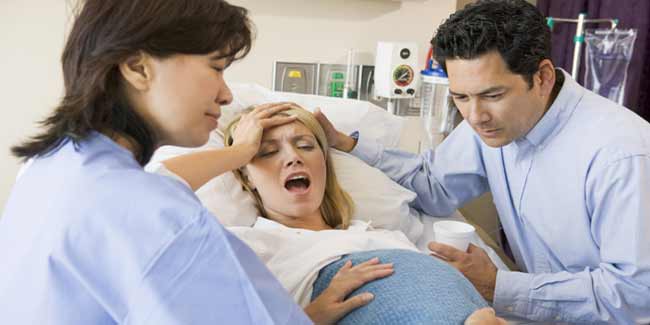
Active labour is the time when the real work begins after all the wrong signs and signals have passed. This is the time when your contractions become stronger, longer, closer and regular. Know what to do when you finally reach this stage.
 You have successfully delivered your baby and you are thrilled and worn out at the same time. At the same time, your mind wanders off to your old pair of jeans and you wonder if at all you would fit into it again. You must understand that crash dieting or excessive exercising can cause severe damage to your body.
You have successfully delivered your baby and you are thrilled and worn out at the same time. At the same time, your mind wanders off to your old pair of jeans and you wonder if at all you would fit into it again. You must understand that crash dieting or excessive exercising can cause severe damage to your body.
The Final Countdown
The active labour is the time after which you would deliver your baby, and it takes from a few minutes to up to a few hours or more to push the baby. It certainly takes longer for first tine mothers and women who have had epidural.
The only thing that you can do at this time is push, and you will be getting encouraged to push with each contraction to speed this process. You might even take it more slowly by letting the push come naturally, which is until you feel the urge to push. You should be tensed when you are pushing, and you can push when you are squatting, sitting, kneeling or even when you are on all fours.
Leave the rest to the health care provider who is working with you.
Here are a few pointers that will guide you to understand what to expect after labour and delivery:
- Be prepared to face a plumper you. In the last stages of pregnancy, the body tends to swell up including your feet and hands. Once you deliver the baby, the extra baggage of water and the weight of the foetus reduce considerably making you look slimmer already. You should know, at this juncture, how to tackle with your changed body. Once the body regains its sodium weight and drops the weight of fluids, placenta and the foetus, you can already think slim by then.
- After labour and delivery, women by and large experience sore breasts as they start lactating. Sore nipples are the most common complaints that women face post their delivery.
- Constipation is another ruling factor that women can experience. This is because the muscles of the rectum and episiotomies take time to heal. This is because, at times, while birthing, the area between the anus and the vagina is cut or torn. This is stitched up by the doctor right after the mother delivers the child. This rupture takes time to heal and can cause throbbing pain while walking or healing.
- Hemorrhoids or swollen anal tissue is another post-natal symptom that a woman can expect.
- Involuntary passing of urine or faecal matter while laughing, crying or any other uncertain movement can be common in women who have just faced labour and vaginal delivery. This occurs as the excessive stretching of your muscles during birthing, makes the muscles loose.
- A woman post birthing can also experience hot and cold flashes. Body takes time to adjust to new hormonal changes and this can cause your internal thermostat to respond to hot and cold sensations excessively.
- Vaginal discharge is the most common occurrence in women after their delivery. They might also experience clotting or reduction in bleeding. This contraction is absolutely normal after a baby is delivered. The vaginal discharge can initially appear yellow in colour and later on turn white and then stop in the next couple of weeks.
Apart from that, never forget to give your body sufficient rest before you get into your daily grind. The body needs to heal which is also essential if you are planning your second child in the coming years. Take care!
Read more articles on Pregnancy and Labor







